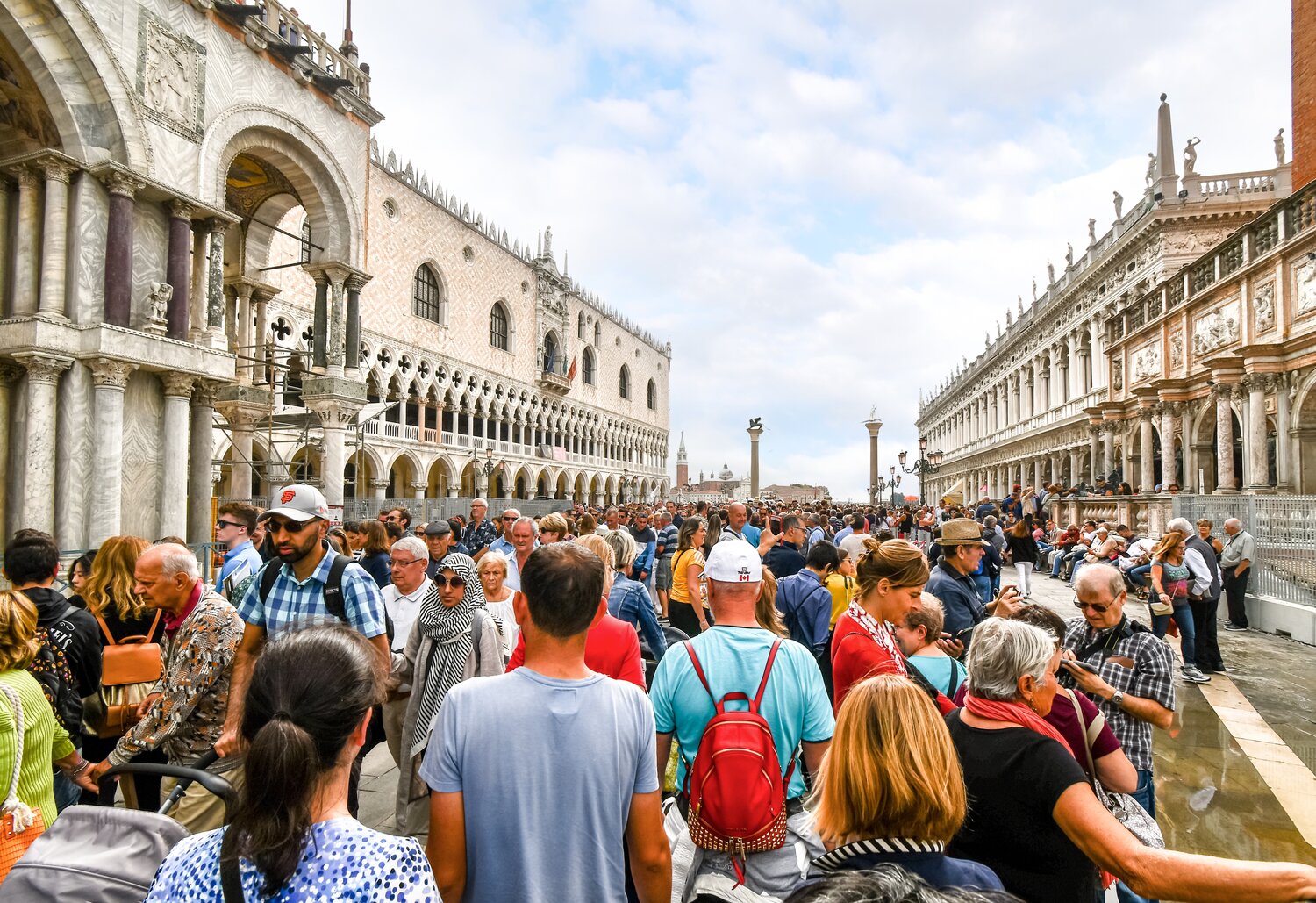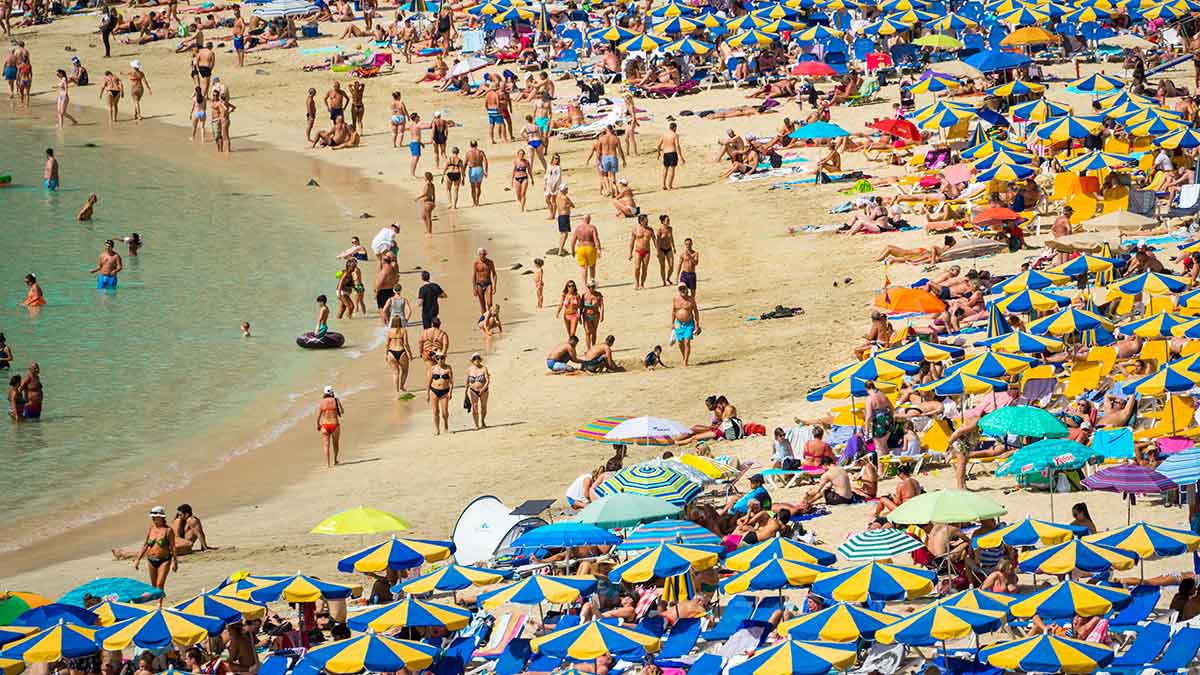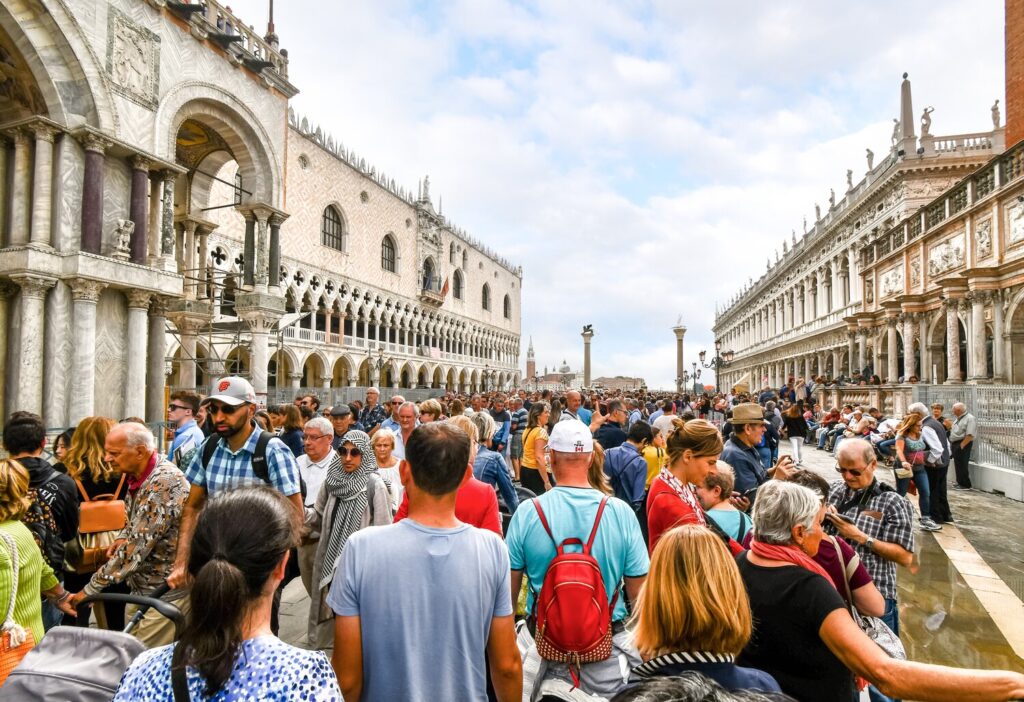Overtourism has become a significant issue in many popular destinations. Digital nomads must consider sustainable travel practices to mitigate their impact.
Overtourism strains local resources and disrupts communities. Digital nomads, with their flexible lifestyles, can unintentionally contribute to this problem. Choosing less crowded destinations, respecting local cultures, and supporting local businesses are crucial steps. Sustainable travel practices help preserve the environment and the local way of life.
By being mindful of their impact, digital nomads can enjoy their adventures without contributing to overtourism. This balance ensures that travel remains enjoyable and accessible for future generations. Responsible travel choices play a vital role in maintaining the delicate balance between exploration and preservation.
Introduction To Overtourism
Overtourism is a growing issue in popular travel destinations. This phenomenon occurs when too many tourists visit a place. It affects the environment and local communities. With the rise of digital nomads, overtourism has become even more pressing. So, where do we draw the line in digital nomad travel?
Rise Of Digital Nomads
The number of digital nomads has increased rapidly. These people work remotely and travel frequently. Advances in technology make this lifestyle possible. Many digital nomads choose popular tourist spots to live and work. This trend adds to the problem of overtourism.
Popular destinations struggle to handle the surge in visitors. Cities like Bali, Barcelona, and Prague see more tourists than ever. This influx strains local resources and infrastructure. The rise of digital nomads contributes to these issues.
Impact On Local Communities
Overtourism affects local communities in many ways. Increased demand for housing drives up rental prices. Local residents may find it hard to afford living in their own cities. Tourist-heavy areas become crowded, making daily life difficult.
The local culture can suffer as well. Traditional customs and practices might get overshadowed by tourist activities. Businesses often cater more to tourists than locals. This shift can change the character of a community.
| Impact | Description |
|---|---|
| Housing Costs | Rental prices increase, locals struggle to afford homes. |
| Crowding | Daily life becomes difficult due to crowded areas. |
| Cultural Change | Local customs overshadowed by tourist activities. |
Environmental impact is another concern. More tourists mean more waste and pollution. Natural landscapes can suffer damage from overuse. Protecting these areas becomes harder with more visitors.
Local economies may also face challenges. While tourism brings money, it can create dependency. If tourist numbers drop, local businesses could suffer. A balanced approach is needed to sustain local economies.
Economic Implications
Overtourism and the rise of digital nomads bring economic changes. These changes impact local economies in many ways. They can boost the economy but also present challenges.
Boost To Local Economies
Digital nomads often spend on local services. They rent apartments, eat at restaurants, and use co-working spaces. This spending helps local businesses thrive. The influx of digital nomads can also create new jobs. People may find work in hospitality, transportation, or tech support.
Local governments may see an increase in tax revenue. This money can fund public services and infrastructure. In tourist-heavy areas, digital nomads contribute to the economy year-round.
| Economic Benefits | Examples |
|---|---|
| Increased Spending | Restaurants, Co-working Spaces |
| Job Creation | Hospitality, Transportation |
| Higher Tax Revenue | Funding Public Services |
Challenges For Small Businesses
Small businesses may struggle with the influx of visitors. High demand can drive up costs. Rent and supply prices may rise. Local shops may find it hard to compete with larger chains. Digital nomads might prefer familiar brands, hurting local sellers.
Overtourism can also strain resources. Water, electricity, and waste management services may become overloaded. Small businesses might face higher operational costs. They may also deal with more regulations and taxes.
- Higher Costs: Rent and supplies become expensive.
- Competition: Local shops compete with big chains.
- Resource Strain: Utilities and services get overused.
Environmental Concerns
Overtourism is a growing issue. Digital nomad travel has many benefits. But it also brings environmental concerns. These concerns need attention. Let’s explore some key issues.
Degradation Of Natural Sites
Natural sites are beautiful. They attract many tourists. But too many visitors can cause harm. Foot traffic can damage plants. Litter becomes a big problem. Wildlife gets disturbed. These impacts can destroy the beauty of these places.
A study found that popular tourist spots see more damage. Natural sites lose their charm. Local ecosystems suffer. Conservation efforts are needed. Visitors should follow rules. They should respect nature.
Carbon Footprint
Travel has a high carbon footprint. Planes, cars, and buses emit carbon dioxide. This gas harms our planet. Digital nomads often travel long distances. They contribute to this problem.
Reducing carbon footprints is crucial. Digital nomads can take steps. They can use public transport. They can choose eco-friendly options. Here is a quick guide:
| Mode of Transport | Carbon Emission (grams of CO2 per km) |
|---|---|
| Plane | 285 |
| Car | 160 |
| Bus | 68 |
| Train | 14 |
Using trains or buses can help. It reduces emissions. Every small step counts. Digital nomads should be aware. They should make better choices.
Cultural Impact
Digital nomads are now traveling to many places. This rise has caused overtourism. The surge affects local cultures deeply. Let’s explore the cultural impact of digital nomad travel.
Loss Of Local Identity
Many locals see their traditions fading. Tourists often seek the same attractions. This demand can change the local culture. Traditional shops may turn into souvenir stores. Local festivals may become tourist events. The area’s unique charm can vanish. Locals may feel like strangers in their own towns.
Cultural Exchange Benefits
Not all changes are bad. Digital nomads bring new ideas. They share their own cultures. This exchange can enrich local life. Locals learn new languages. They gain new skills. Local businesses can grow. Cultural exchange can build stronger communities.
Infrastructure Strain
Overtourism impacts cities in many ways. One big issue is infrastructure strain. Digital nomads are increasing. This trend puts pressure on local resources. Two main areas affected are housing and public transport.
Housing Shortages
Many digital nomads seek long-term stays. This trend creates housing shortages for locals. People face rising rents. They compete with tourists for places to live. In popular cities, locals are often priced out.
Here is a table showing the impact:
| City | Rent Increase (%) | Population Displacement (%) |
|---|---|---|
| Barcelona | 30% | 20% |
| Lisbon | 25% | 15% |
| Bali | 35% | 10% |
The table shows rent increases in tourist hotspots. These figures indicate the severity. Locals lose their homes. Tourists take over the housing market.
Public Transport Overload
Another issue is public transport overload. Cities see more people using buses and trains. This leads to crowded vehicles. Commuters face delays and discomfort.
Consider these points:
- Longer wait times at stations.
- Increased traffic congestion.
- More wear and tear on transport systems.
These problems make daily life harder. Residents struggle with their commutes. The quality of public services declines.
Digital nomads need to be aware. Their presence impacts local communities. Responsible travel practices can help reduce these issues.

Credit: digitalnomads.world
Policy Responses
Overtourism has become a pressing issue. Cities and countries are grappling with the influx of digital nomads. Policymakers are exploring various responses to mitigate the impact.
Tourist Quotas
Many destinations are implementing tourist quotas to control visitor numbers. This helps protect local communities and natural resources.
- Venice limits daily visitors to preserve its heritage.
- Barcelona restricts short-term rentals to manage crowding.
- Machu Picchu enforces entry limits to protect archaeological sites.
These quotas ensure a balanced experience for both locals and tourists.
Sustainable Tourism Initiatives
Destinations are adopting sustainable tourism initiatives to promote responsible travel. These initiatives encourage eco-friendly practices among digital nomads.
| Destination | Initiative |
|---|---|
| Amsterdam | Green Key certification for eco-friendly hotels |
| New Zealand | Tiaki Promise for responsible tourism |
| Costa Rica | Certification for Sustainable Tourism (CST) |
These measures help in conserving the environment. They also educate travelers about sustainable practices.
By implementing these policy responses, destinations can manage overtourism effectively. This ensures a harmonious coexistence between locals and digital nomads.
Balancing Act
Overtourism is a growing issue in popular destinations. Digital nomads, with their flexible lifestyles, add to this problem. Balancing travel and local impact requires effort. Let’s explore how digital nomads can practice responsible travel and involve communities.
Responsible Travel Practices
Digital nomads can adopt responsible travel practices to reduce their impact. Consider these tips:
- Choose off-peak travel times to avoid crowds.
- Stay in eco-friendly accommodations.
- Support local businesses and artisans.
- Minimize waste and use reusable products.
- Respect local customs and traditions.
Following these tips helps balance travel and local well-being.
Community Involvement
Engaging with the local community is essential. It fosters mutual respect and understanding.
Here are some ways to involve the community:
- Participate in local events and festivals.
- Volunteer for community projects.
- Learn the local language and culture.
- Share your skills with local businesses.
- Promote sustainable tourism initiatives.
Building strong community ties benefits both nomads and locals. It ensures that travel remains sustainable and enjoyable.

Credit: www.euronews.com
Future Of Digital Nomad Travel
The future of digital nomad travel is at a crossroads. Overtourism is a growing concern. We must find a balance. Digital nomads seek adventure and freedom. Yet, they must also respect local cultures and environments. Where do we draw the line?
Technological Advances
Technology plays a key role in digital nomad travel. Faster internet speeds make remote work easier. 5G networks will enhance connectivity. Smart devices simplify travel logistics. AI-powered tools help with language translation.
Blockchain technology offers secure payment methods. Virtual reality can preview destinations. Augmented reality provides interactive guides. These advancements make travel more seamless. But they also contribute to overtourism.
Evolving Travel Trends
Travel trends are changing rapidly. Slow travel is gaining popularity. It emphasizes longer stays in one place. This reduces the environmental impact. Eco-friendly travel is also on the rise. Sustainable practices are becoming essential.
Co-living spaces offer community and comfort. They cater to digital nomads. Workation packages combine work and vacation. These trends aim to balance travel and sustainability.
| Technology | Impact |
|---|---|
| 5G Networks | Faster, reliable internet |
| Smart Devices | Enhanced travel logistics |
| Blockchain | Secure payments |
| Virtual Reality | Destination previews |
| Augmented Reality | Interactive guides |
- Slow travel reduces environmental impact.
- Eco-friendly travel promotes sustainability.
- Co-living spaces offer community.
- Workation packages combine work and leisure.
Digital nomads must adapt to these trends. They must also be mindful of their impact. Sustainable travel is the future. Let’s embrace it responsibly.

Credit: sustainabletravel.org
Frequently Asked Questions
What Is Overtourism?
Overtourism occurs when too many tourists visit a destination, causing environmental and social strain. It can lead to overcrowding and infrastructure damage. Digital nomads can contribute to this issue if their numbers are not managed. Responsible travel practices are essential to mitigate overtourism.
How Do Digital Nomads Impact Local Communities?
Digital nomads can both positively and negatively impact local communities. They bring economic benefits but can also drive up living costs. It’s crucial to balance their presence to avoid overtourism and community disruption.
Can Digital Nomads Cause Overtourism?
Yes, digital nomads can contribute to overtourism if they flock to popular destinations. Increased numbers can strain local resources and infrastructure. Sustainable travel practices are vital to minimizing their impact.
What Are Sustainable Travel Practices For Digital Nomads?
Sustainable travel practices include staying longer in one place, supporting local businesses, and respecting cultural norms. Reducing environmental footprints and promoting responsible tourism can help mitigate overtourism.
Conclusion
Balancing digital nomad travel and overtourism is crucial for sustainable tourism. Travelers should respect local cultures and environments. Choosing less crowded destinations can help reduce strain on popular spots. Responsible travel ensures future generations can enjoy these beautiful places. Let’s travel mindfully and preserve the world’s treasures for everyone.

